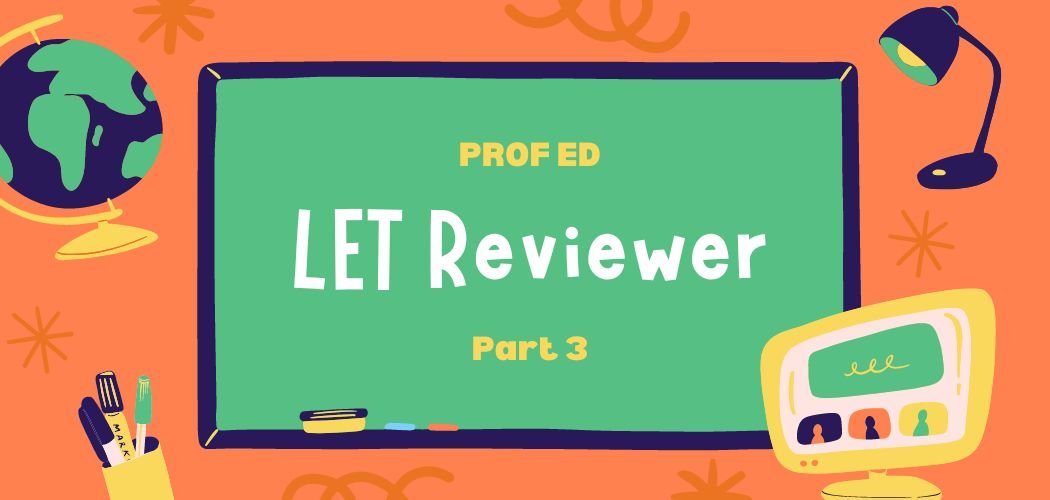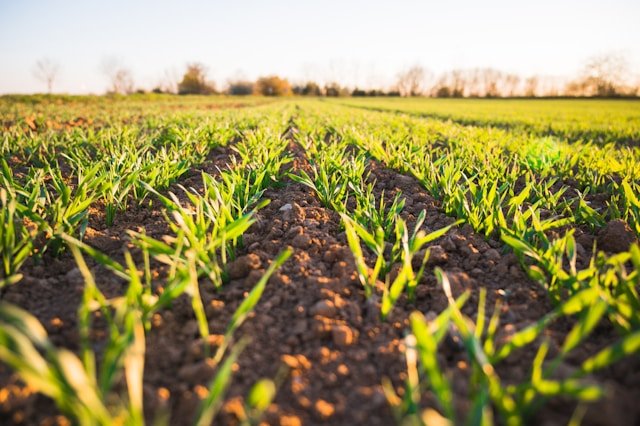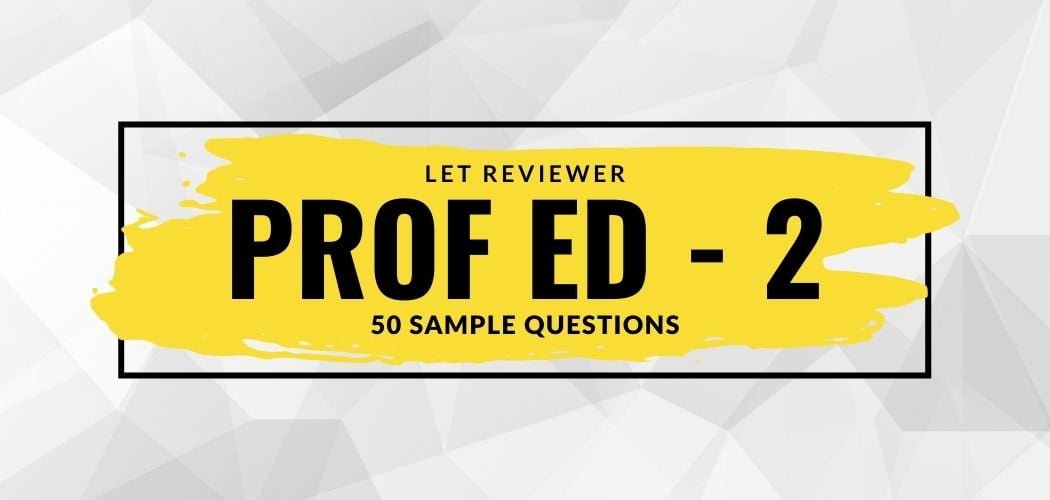This is Part 1 of our free LET reviewer that covers the Science subject. This has 50 multiple-questions that can be completed in 30 minutes.
Get a sense of what’s coming on your licensure exam by answering this set of questions. This reviewer is intended for the General Education (Gen Ed) portion of the exam but Science majors will find it useful, too.
Recommended reading
- 5 Research-Based Techniques to Pass Your Next Major Exam
- (13 Tips From Repeaters) How to Pass the LET the First Time
- How to Remember Better: A Study Tip
Gen Ed Science reviewer
Question 1. These are living things that use sunlight, chlorophyll, water, and carbon dioxide to produce food.
A. Autotrophs✅
B. Consumers
C. Heterotrophs
D. Food chain
Question 2. It is described as a lifeline of the body. It is the body’s “pick up” and delivery system.”
A. blood
B. nervous system
C. circulatory system✅
D. heart
Question 3. It carries the oxygen-rich blood to the head, arms, chest, and down to the waist and legs.
A. heart
B. ventricles
C. aorta
D. arteries✅
Question 4. They are the transmitters of messages from the different parts of the body to the brain and vice versa.
A. spinal cord
B. neurons or nerve cells✅
C. brain
D. arteries
Question 5. Which part of the brain controls the following activities: breathing, blood pressure, heart rate, and alertness?
A. brainstem✅
B. hypothalamus
C. cerebrum
D. spinal cord
Question 6. Refers to a sequence of organisms in a community that constitutes a feeding chain.
A. photosynthesis
B. ecosystem
C. consumers
D. food chain✅
7. Is a group of interacting plants, animals, and humans in a particular area?
A. ecological community✅
B. environment
C. living organism
D. food chain
Question 8. Excessive presence of carbon dioxide in the air, trapping heat near the earth’s surface causing a rise in temperature in the environment.
A. El Niño
B. Greenhouse effect✅
C. Deforestation
D. Weather disturbance
9. The Earth’s shield against the sun’s harmful radiation.
A. Atmosphere
B. Air
C. Ozone layer✅
D. Forest
Question 10. The use of products containing ____ is discouraged because they contribute to the depletion of _____.
A. Chlorofluorocarbon-solar radiation
B. Gas-ozone layer
C. Ozone layer-air
D. Chlorofluorocarbon-ozone layer✅
Question 11. What causes high and low tides?
A. Earth’s rotation on its axis
B. Moon’s gravitational pull✅
C. Sun’s solar energy
D. Earth’s gravitational pull
Question 12. How is coral a tool formed?
A. Volcanic eruption
B. Coral growing around a volcanic island✅
C. Underwater bedrock formations
D. Earthquake
Question 13. What is a longshore drift?
A. Movement of sand and shingles along the coast✅
B. Sand bars
C. Accumulation of sand at the river mouth
D. Island formed by volcanic eruptions
Question 14. How does an occlusion form?
A. Cold air moving up from the ground
B. Cold front pushing warm air up off the ground✅
C. Unbalance electrical reactions in the air
D. Cold and warm air mixing in the atmosphere
Question 15. What is heat haze?
A. A reflection caused by pollutants in the air✅
B. A distorted image resulting from the bending of sun’s light rays by changes in air temperature
C. A movement of warm air over a vast expanse of land
D. Caused by extremely high temperature common in desert areas.
Question 16. What sort of rock formation do the world’s greatest mountain ranges consist of?
A. magma
B. chalk deposit
C. fold eruptions✅
D. deforestation
Question 17. What is the force that wears down mountains?
A. Earthquake
B. Erosion✅
C. Volcanic eruptions
D. Deforestation
Question 18. How are volcanic islands formed?
A. Collision of two oceanic plates✅
B. Cooling of lava by seawater
C. Volcanic eruptions
D. Accumulations of corals
Question 19. When the Theory of plate Tectonic was generally accepted?
A. 1900’s
B. 1930’s
C. 1950’s
D. 1960’s✅
Question 20. The weathering away of rocks by water, wind, and ice:
A. Denudation
B. Erosion✅
C. Volcanic rock
D. Metamorphic rock
Question 21. How do hormones work?
A. By releasing adrenaline
B. By controlling cell chemistry✅
C. By regulating water loss
D. By controlling blood pressure
Question 22. Name the male and female sex hormones.
A. Sperm cell and Ovum✅
B. Testosterone
C. Chromosomes
D. Red and white blood cells
Question 23. The unit of measurement of energy in a given amount of food.
A. Pound
B. Kilo
C. Olfactory system
D. Calorie✅
Question 24. The growth of roots toward water is an example of?
A. Chemotropism
B. Geotropism
C. Hydrotropism✅
D. Phototropism
Question 25. DNA means:
A. Data nurturing analysis
B. Deoxyribonucleic acid
C. Deoxyribonucleic acid✅
D. Deotrixylnucleic acid
Question 26. The control center of the body is the?
A. Heart
B. Lungs
C. Brain✅
D. kidney
Question 27. Which part of the body is connected with the sense of touch?
A. Nose
B. Skin✅
C. Ear
D. Eyes
Question 28. Which of the following is not a sense organ?
A. Eyes
B. Ears
C. Nose
D. Teeth✅
Question 29. A Barometer is used to measure _______.
A. wind direction
B. rainy water
C. temperature
D. atmospheric pressure✅
Question 30. Which of the following is the smallest bird in the world?
A. Hummingbird✅
B. Robin
C. Curlew
D. Greenfinch
Question 31. Which star is nearest to the sun?
A. Proxima centauri✅
B. Sirius
C. Alpha centauri
D. Spole star
Question 32. Which is the fastest animal on land?
A. Leopard
B. Cheetah✅
C. Deer
D. Kangaroo
Question 33. Who built the first telescope?
A. Galileo✅
B. Isaac Newton
C. Alexander Fleming
D. Benjamin Franklin
Question 34. Henry Ford invented the first _______.
A. Television
B. Telephone
C. Motor Car✅
D. Refrigerator
Question 35. Jaundice is an infectious disease, which spreads through _____.
A. air
B. soil
C. water✅
D. clothes
Question 36. The telephone was invented by?
A. JL Baird
B. AG Bell✅
C. Thomas A. Edison
D. Marconi
Question 37. Wright brothers are inventors of the?
A. Balloon
B. Bicycle
C. Aeroplane✅
D. Television
Question 38. Which planet is closest to the sun?
A. Mars
B. Venus
C. Mercury✅
D. Jupiter
Question 39. The most poisonous plant is _____
A. pitcher
B. dodder
C. castor bean✅
D. mangrove
Question 40. Scientists who study the weather are known as?
A. Seismologists
B. Meteorologists✅
C. Astronomer
D. Anthropologist
Question 41. Which of the following birds cannot fly?
A. Emu
B. Rheas
C. Ostrich
D. All of these✅
Question 42. Who invented the sewing machine?
A. Elias Howe✅
B. Murray Spangler
C. Thomas Martin
D. Leslie Large
Question 43. Who invented the fountain pen?
A. Lewis Waterman✅
B. Lazlo Biro
C. C Clarke
D. Jhon Walker
Question 44. Parkinson’s disease is a brain disease that is characterized by loss of nerve cells in which part of the brain?
A. Cerebrum
B. Cerebellum
C. Cerebral Cortex✅
D. Brain stem
Question 45. Symbiosis is defined by biologists as individuals of different species living together in intimate association, regardless of whether the association is harmful, neutral, or beneficial. All of the following pairs are examples of symbiosis EXCEPT:
A. ants and tapeworms
B. human and tapeworms
C. cats and mice
D. dogs and cats✅
Question 46. Which of the following statement about atomic structure is NOT right?
A. All atoms of the same atomic numbers are atoms of the same element.
B. An atom can gain or lose electrons without changing its charge.✅
C. Atoms are mostly empty spaces.
D. Most of the mass of the atom is concerned with its nucleus.
Question 47. Which of the following statement is TRUE of nuclear fission?
A. The energy process is identical to that which occurs in the sun.
B. Energy is obtained by getting the nucleus of the atoms to break up or split.✅
C. Matter from the lighter atoms is changed into energy.
D. Scientists can combine lighter atoms to form heavier atoms.
Question 48. All of the following statements about the routinary use of pesticides are TRUE, EXCEPT:
A. Due to the widespread use of DDT, a new type of housefly emerged.
B. It results in the evolution of exciting new types of organisms.✅
C. It may not only kill the intended insects but also those that feed on them.
D. Pesticides tend to become progressively less effective as the organisms become immune.
Question 49. The skull of a person increases in size rapidly during _____.
A. puberty
B. babyhood
C. adolescence✅
D. adulthood
Question 50. Apparently, the loss of weight of objects immersed in a fluid is due to ______.
A. Archimedes principle
B. Specific gravity
C. Newton’s theory
D. Buoyant force✅
Answer key
| 1. A | 11. B | 21. B | 31. A | 41. D |
| 2. C | 12. B | 22. A | 32. B | 42. A |
| 3. D | 13. A | 23. D | 33. A | 43. A |
| 4. B | 14. B | 24. C | 34. C | 44. C |
| 5. A | 15. A | 25. C | 35. C | 45. D |
| 6. D | 16. C | 26. C | 36. B | 46. B |
| 7. A | 17. B | 27. B | 37. C | 47. B |
| 8. B | 18. A | 28. D | 38. C | 48. B |
| 9. C | 19. D | 29. D | 39. C | 49. C |
| 10. D | 20. B | 30. A | 40. B | 50. D |



